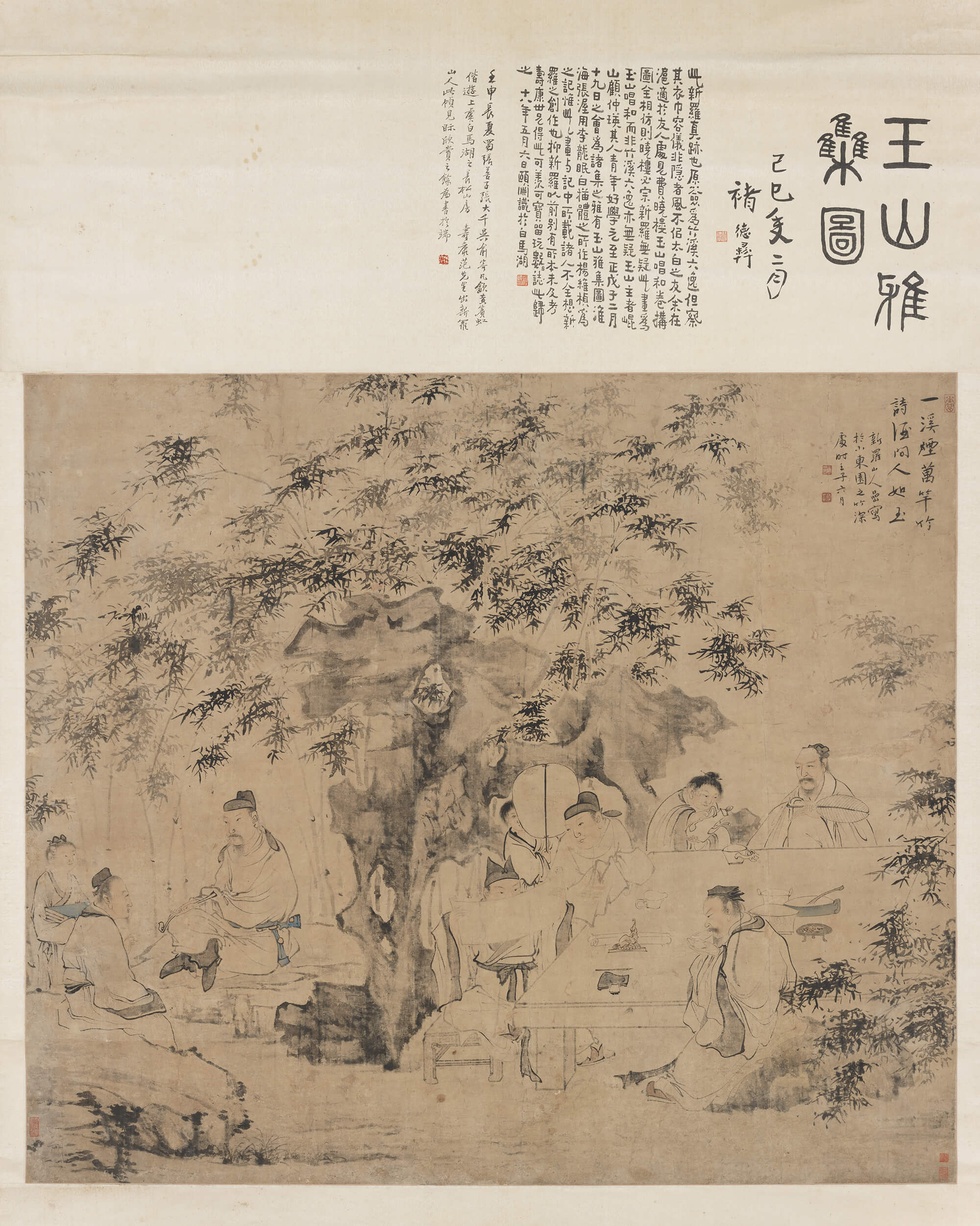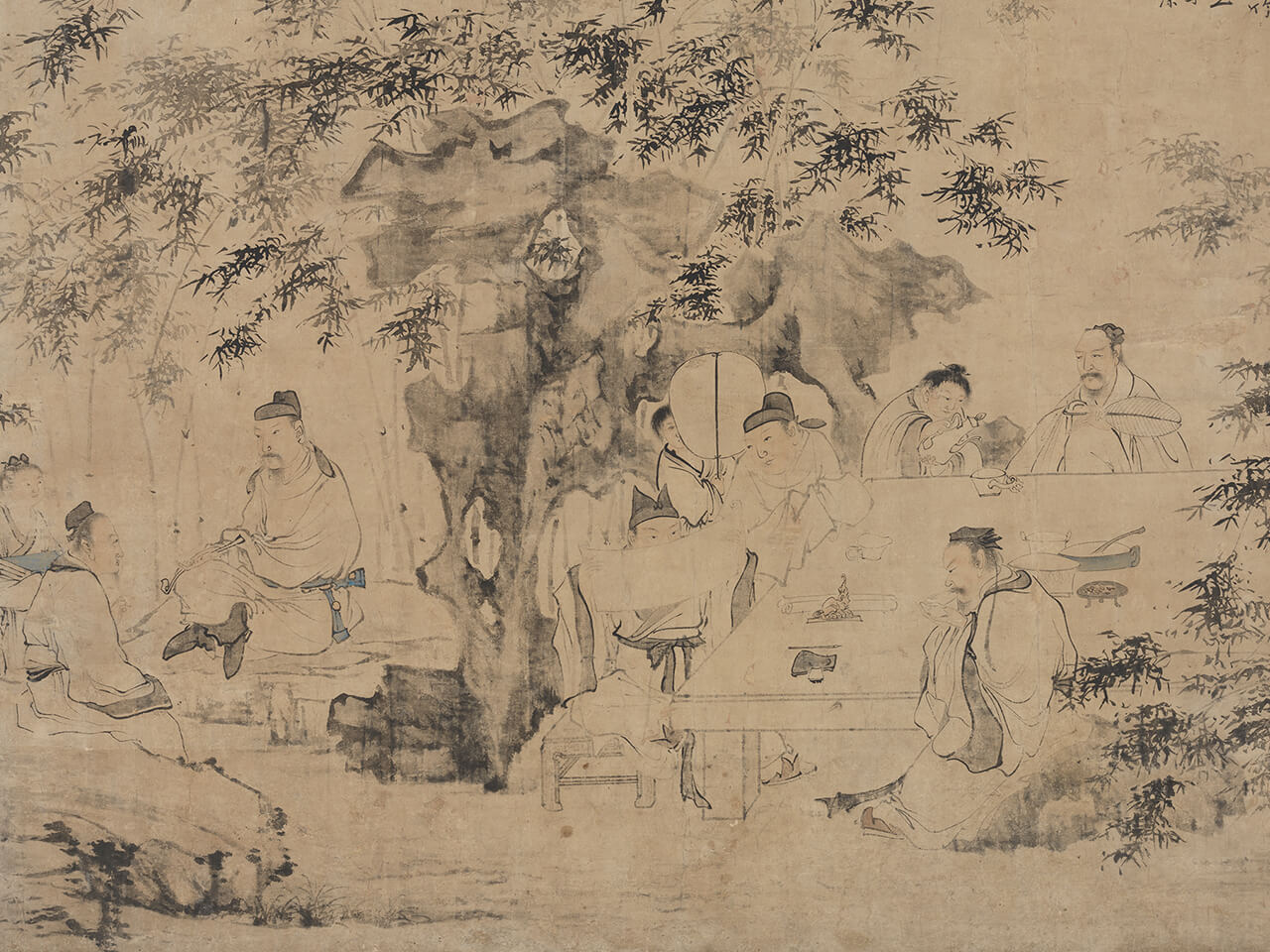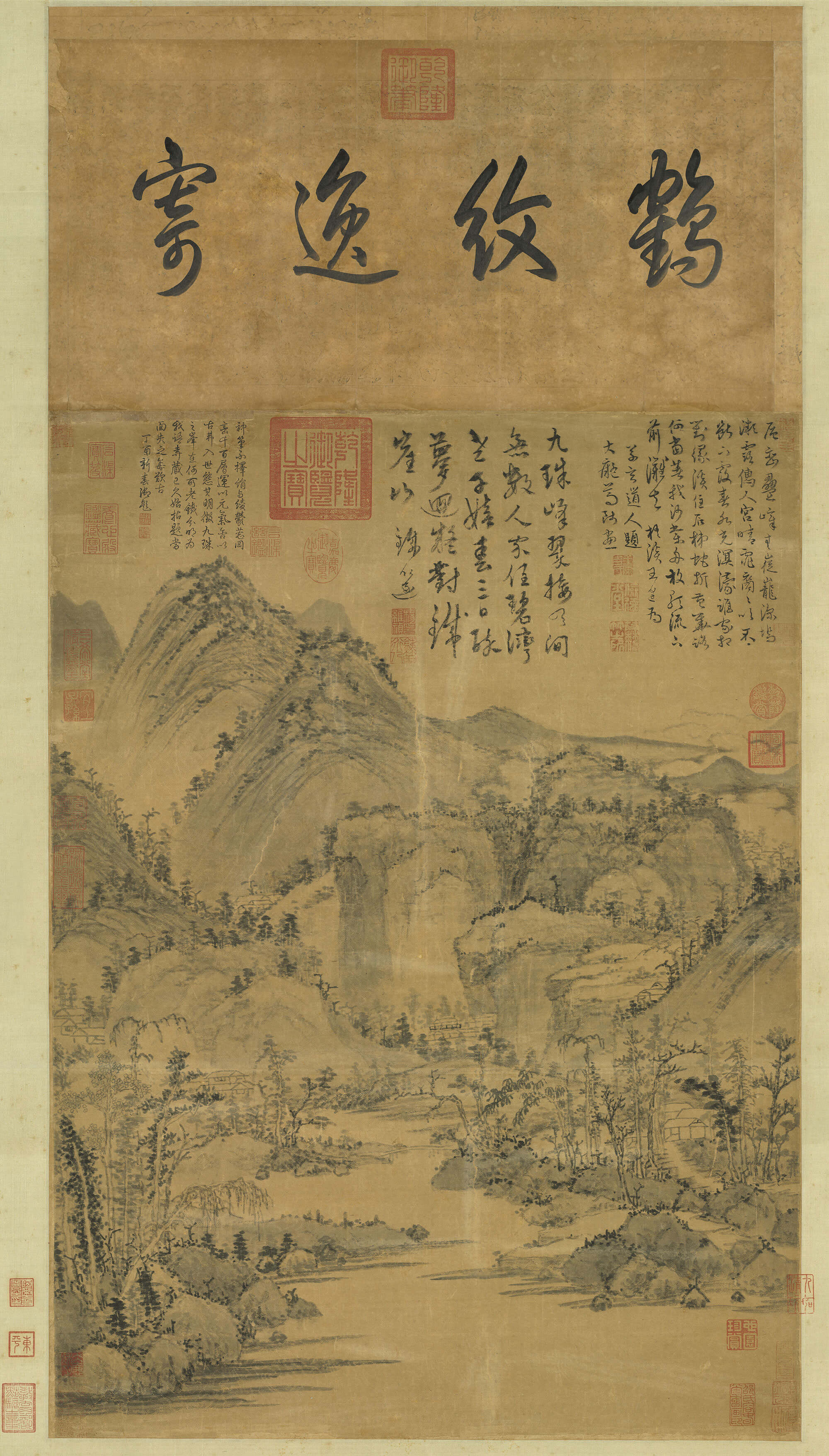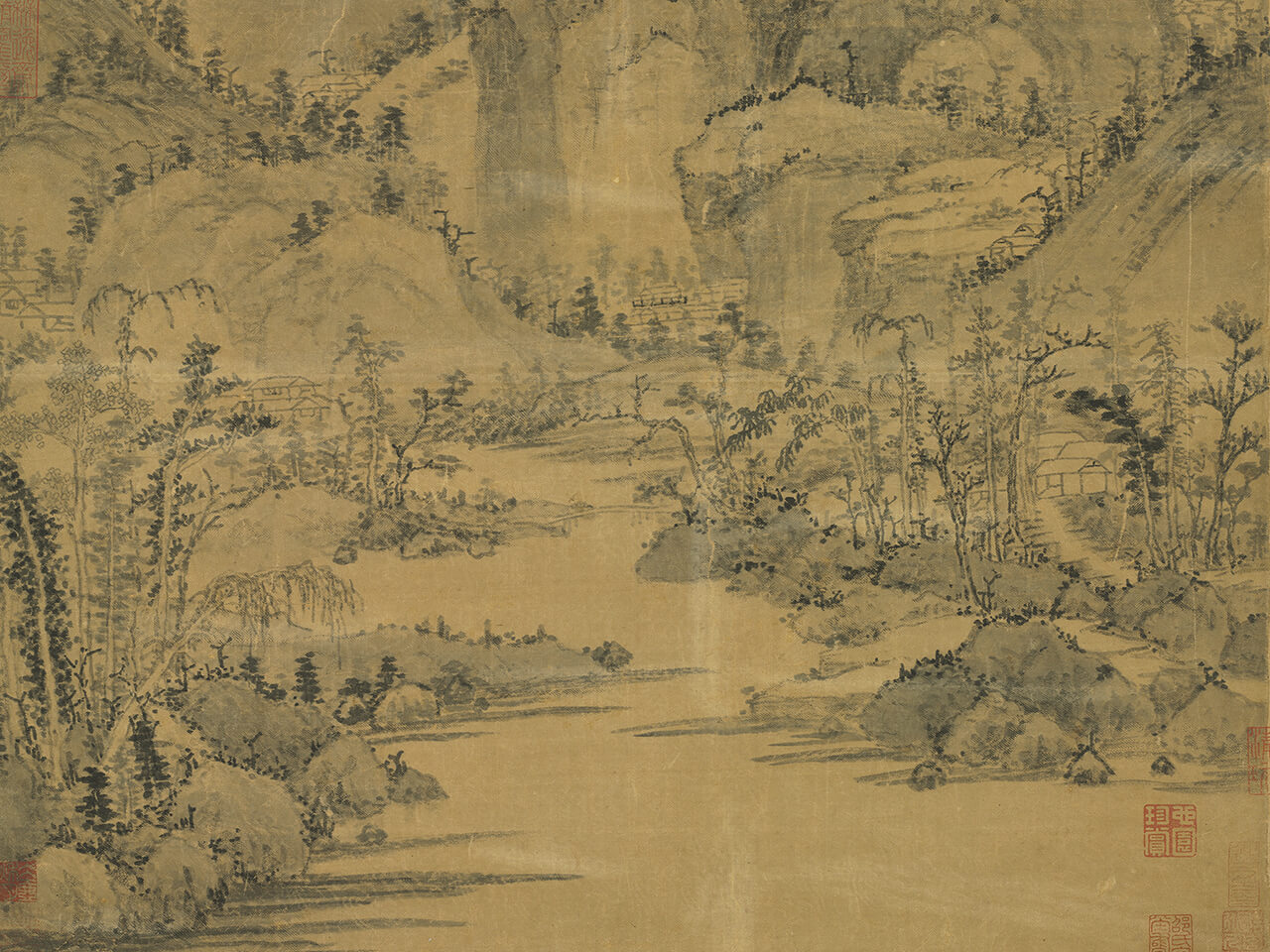Harmonizing in a Time of Chaos
In the many interactions that took place in exchanges between scholars in the Jiangnan area during the Yuan dynasty, personal connections and networking were complex and varied. The participants in elegant gatherings at the time came from different backgrounds. Not only were their scholars, but also Buddhist monks and Daoists as well as non-ethnic Chinese ("semuren," such as West and Central Asians). There were small gatherings of a few close friends and those with more than a dozen. It was a period in which records were more often made of elegant gatherings, including for such activities as viewing artworks together and writing inscriptions. Or the poems that were composed in harmony among participants were gathered together and published. Gu Ying’s (1310-1369) Anthology of Famous Scenery at Jade Mountain, Elegant Gathering at a Thatched Hut, and Record of Travels at Jade Mountain are publications of poetry exchanged at dozens of elegant gatherings that he held. Though the poetry written at such gatherings represented only brief moments in time, the records have become eternal, having special meaning as a medium to remember and idealize.
-
Elegant Gathering at Jade Mountain
- Hua Yan (1682-1756), Qing dynasty
Gu Ying held as many as thirty elegant gatherings over his lifetime collectively known as the "Elegant Gathering at Jade Mountain (Yushan)." After these gatherings, he collected the poems that had been composed in reciprocity between the participants and had them published, reaching as many as three volumes. Compared to the elegant gatherings at the Orchid Pavilion and Western Garden, with their large number of records in painting and calligraphy, those for the elegant gatherings at Jade Mountain are relatively lacking. Zhang Wo in the fourteenth century once did a painting and record to commemorate the event, but it no longer survives.
This work was originally entitled "Six Hermits of the Bamboo Stream," but the title was revised to the present one by Jing Yiyuan (1877-1938).
-
Nine Pearly Peaks in Green
- Huang Gongwang (1269-1354), Yuan dynasty
The inscription on this painting indicates that Huang Gongwang did it for Yang Weizhen (1296-1370); it depicts Yang’s guest residence and the scenery of nearby Songjiang. Compared to the lively scenes in Gu Ying’s depiction of an elegant gathering, a small group of close friends gathered together heightens the sense of friendship.
The central layer of hills and massif of mountaintops in the painting combine to create a rich and varied force for the landscape. Moreover, the addition of ink for the lush and soft quality to the ridge lines and short ink lines that form verdant trees create an atmosphere overflowing with vitality, which is a feature of the landscape paintings by Huang Gongwang.



